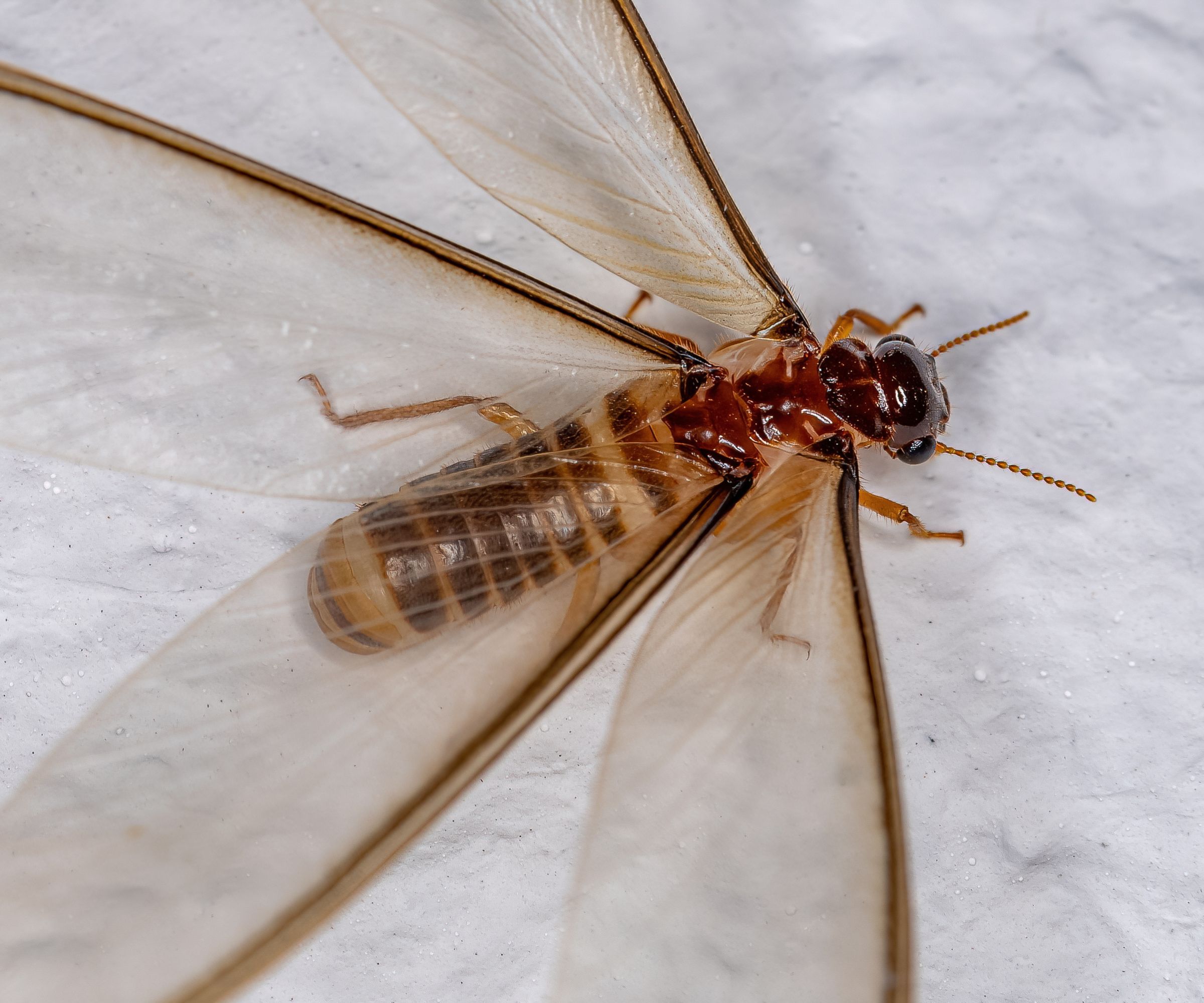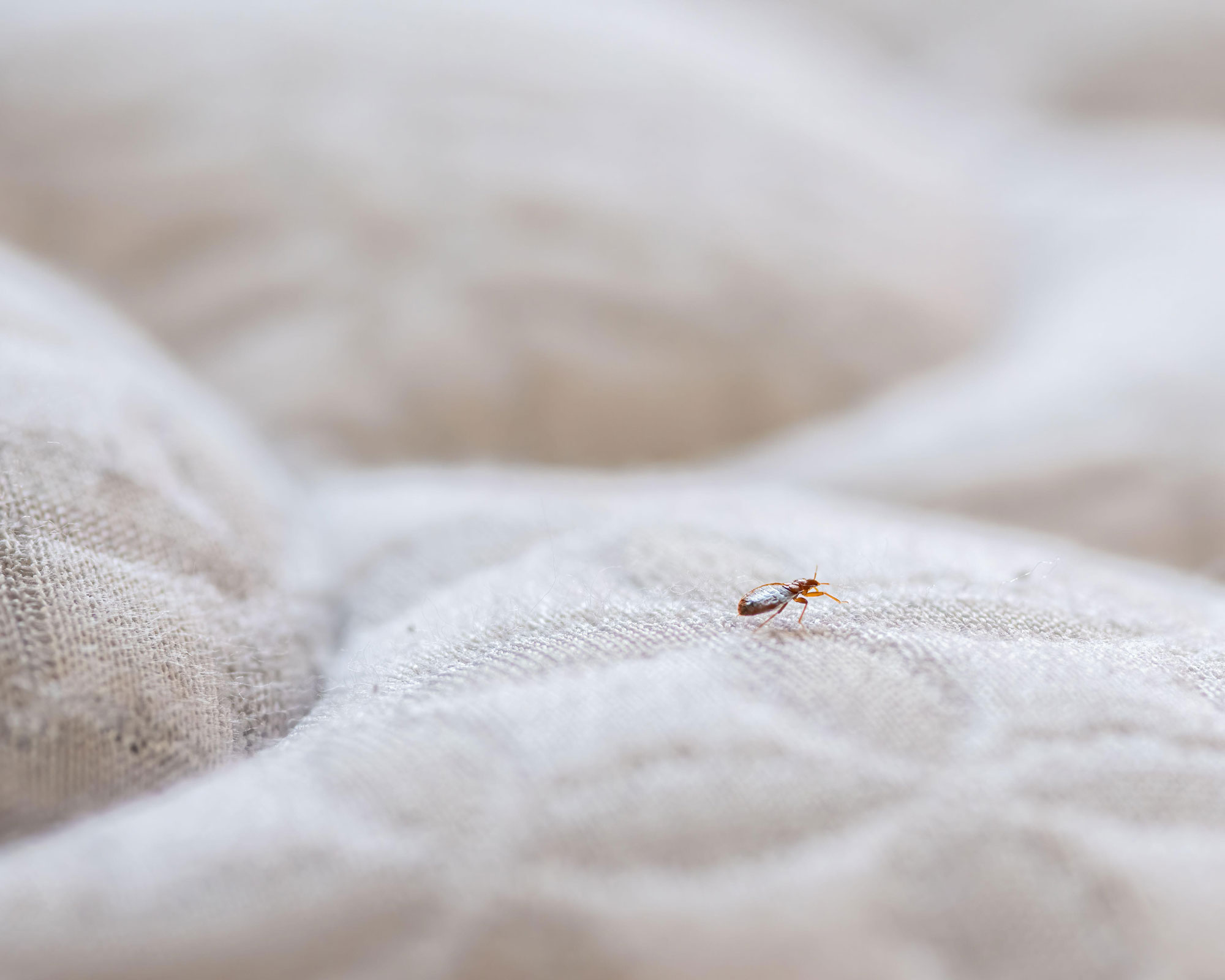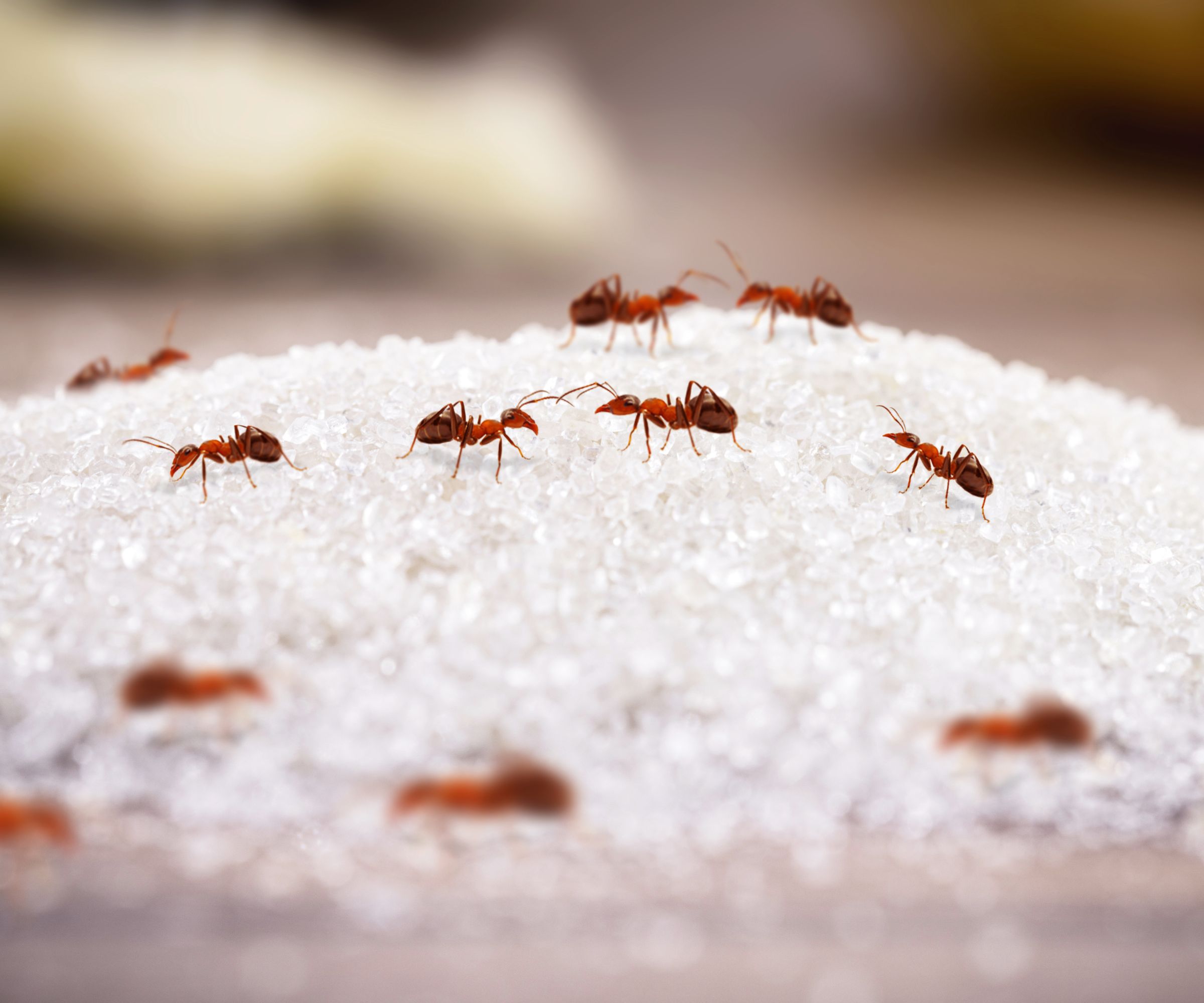7 common winter pest infestations – and how to keep them out of your home in the coming months
Banish bugs and get rid of rodents with these top tips from entomologists and pest control pros


As you snuggle up at home over winter, either under a blanket or next to a roaring log fire – the last thing you will want joining you is unwanted pesky guests.
With the temperatures dropping, there are a number of pests to watch out for over winter that may end up inside your home. Luckily, by taking the correct precautions, your home can stay pest-free.
I spoke to entomologists for their advice on how to identify indoor pests and deal with the most common ones, to determine which common winter pest infestations could be a threat to your home, and how to keep them out for over the coming colder months as they seek shelter from adverse weather.
7 common winter pest infestations
1. Termites

A flying termite
Need to know how to get rid of flying termites, or how to get rid of termites naturally?
'Termites swarm and reproduce until late February,' says Jim McHale, CEO and president at JP McHale Pest Management. 'They thrive in wet environments, so the late winter rain is perfect for termites to survive.'
Living in colonies, these common winters pests can cause severe damage to your property, often nesting within wood piles, leaves and outdoor trash, and venturing inside your home for warmth or to expand their colonies with a satellite colony.
'As temperatures drop below 50 degrees Fahrenheit, termites begin to search for warmth, either by burrowing deeper into the ground or infiltrating buildings,' explains Doug Van Soest, co-founder of SoCal Home Buyers, a professional real estate investment company.
As termites primarily feed on wood, and other cellulose building materials, such as insulation, an unchecked infestation can lead to serious structural integrity issues, and cost thousands in repairs, warns Van Soest.
'Signs of termite damage include hollow or crumbling wood, drooping or discolored drywall, loose tiles, and piles of discarded wings,' he says. 'Additionally, you can sometimes spot flying termites inside or outside your home.'
To prevent termites from entering your home, address moisture issues such as finding and fixing common household leaks, making sure your foundation has adequate drainage, and storing firewood away from your home. 'Termites love to eat their way through wood and get inside, so make sure no wooden element of your home is in contact with the ground outside,' says Van Soest.
To do so, keep yard waste to a minimum, and use caulk, such as the Gorilla Waterproof Caulk & Seal 100% Silicone Sealant available at Amazon to seal any minor entry points.
'It is also important to eliminate any moisture near the foundation of your home,' says McHale. 'Water should be diverted away with properly functioning gutters, downspouts, and splash blocks,' so ensure you know how to clean gutters from the roof and how to prevent gutters from clogging. For example, we recommend installing a gutter guard, such as the A-M Gutter Guard available at Amazon, which is pest, weather and rust-resistant.
'In addition, lawn sprinklers and irrigation systems should be oriented to minimize water puddling near the foundation,' adds McHale.
2. Rodents

'Commensal rodents, Norway rats, roof rats and the house mouse look for a home to spend the winter in as the cooler months approach,' says Joe Malinowski, vice president of pest management at Mosquito Authority and Pest Authority. 'The best actions a homeowner can take is to make a thorough inspection of the outside of their home.'
If you're wondering how to get rid of mice in the attic or how to get rid of rats, look for any cracks or crevices around windows where caulk may have deteriorated, and the integrity of door sweeps. If necessary, these should be replaced, and we recommend GroTheory 2 Door Draft Stopper available at Amazon to do so. Also, evaluate whether there are entry points around plumbing pipes and electrical lines which come into the property.
'Being a good detective and sealing entry points should be the first step in prevention when it comes to rodents, followed by a home inspection by a professional pest management company,' adds Malinowski.
Struggling to know how to get rid of squirrels or how to get rid of squirrels in the attic? 'Both gray and flying squirrels are known to seek shelter in attics, exterior walls, and even between floors using insulation as nesting material,' says Scot Hodges, vice president of professional development and technical services at Arrow Exterminators. 'In addition to the damage their chewing and nesting can cause, squirrels can be carriers of fleas and other unwanted organisms that can infest your entire home once brought inside.'
So, to further deter rodents from entering your home, Scot Hodges, vice president of professional development and technical services at Arrow Exterminators suggests using plastic boxes and containers with seal-tight lids for food storage, such as the IRIS USA 31 Qt Storage Box with Gasket Seal Lid available at Walmart. Keep these off the floor, and organize items to prevent wildlife from residing in undisturbed areas of the house such as the house, garage, basement, and attic, if you need to get rid of rodents in the attic.
'Keep outside cooking areas and grills clean (by ensuring you know how to clean an outdoor kitchen), keep bird feeders away from the house and use squirrel guards to limit access to the feeder,' he adds. We recommend investing in a squirrel-proof bird feeder, such as the Squirrel Buster Plus Squirrel-proof Bird Feeder available at Amazon, which is rated 5 stars by 88% of customers.
'Also, do not leave pet food or water bowls out overnight, advises Hodges. 'And, use a thick plastic or metal garbage can with a tight lid – and always keep it sealed.'
All prices were correct at the time of publication.

This trashcan is made of durable, pre-galvanized steel which won't crack or fade. It's also chew-proof for pests, and features an infinity lid for secure storage.
3. Silverfish

If you need to know how to get rid of silverfish, Dr. Tracy Ellis, award winning entomologist at FarmSense, warns, 'Silverfish and/ or firebrat infestations can develop in humid areas such as basements with poor ventilation, or to due unnoticed slow leaks of pipes.'
In particular, silverfish thrive where old books, magazines or other paper products are stored, and have become damp, as this is what they eat. However, Dr. Ellis advises that if populations are left to grow, they may move on to eating stored, dry food in the kitchen.
'You may notice them when you suddenly turn on the light in a dark room,' she says. 'The trick is to notice them, because they only crawl around at night, and are even more secretive that roaches.'
To monitor their presence and detect where the main infestation is located, you can use a glue board style trap, such as Amazon's Choice MaxGuard Silverfish + Insect Traps, which won't inhumanely trap mice along with them.
Once you clean up the local infestation and find and fix any common household leaks, Dr. Ellis recommends making the area uninhabitable by using one of the best dehumidifiers. Our top overall pick is the GE Energy Star Portable Dehumidifier available at Amazon.
'To trap and kill any stragglers, place Dekko Silverfish Paks (available at Walmart) in discrete locations,' adds Dr. Ellis.
4. Bed bugs

Wondering how to get rid of bed bugs? Though less active as temperatures drop, these pesky pests can still pose a significant risk, seeking refuge and warmth in your home and bed.
'If a nearby apartment complex or neighboring house has a bed bug problem, these blood-feeding pests can easily hitch a ride into your space on packages or people's clothes,' says Van Soest. Once inside, bed bugs multiply extremely quickly, and can be identified by their bites which appear in lines and are small, red and very itchy.
'As soon as you notice bedbug bites, treat everything on your bed with a bed bug specific insecticide,' such as Ortho Home Defense Max available at Amazon, which kills even the toughest bed bug infestations, advises Van Soest. 'Pillows, blankets, sheets, duvets and both sides of your mattress.
'I'd even suggest treating the floor if you have carpet. In addition, wash everything you can at the highest temperature that's safe for the fabric.'
Importantly, however, pest control experts warn against using essential oils for bed bug infestations, so seek other methods when learning how to prevent bed bugs, which we delve into in our dedicated guide.
5. Cockroaches

If you need to know how to get rid of cockroaches from the kitchen or how to get rid of cockroaches naturally, pest expert McHale warns that it's essential to keep all food secured away from them, and to promptly clean up any food spills. 'Cockroaches are one of the biggest concerns throughout February,' he says. 'Their nesting patterns lead to the hatching of an entirely new generation of cockroaches throughout the last weeks of winter.'
Notorious for their ability to thrive in any environment, and survive all attempts to kill them, cockroaches are primarily attracted to food sources, leaky faucets and any dripping pipes. Therefore, to prevent them from entering make sure your home is clean and dry, and that you regularly check all bathtubs, sinks and washing areas for any leaks, advises McHale.
'Cockroaches are not just an unpleasant sight – they also pose health risks, as they often carry pathogens' says Van Soest. 'Their droppings and shed skin can trigger allergies and asthma attacks.'
Make sure to seal all entry points to prevent an infestation, as they can squeeze through even the smallest of cracks. Use caulk, such as the Gorilla Waterproof Caulk & Seal available at Amazon to do so.
'Move wood or leaf piles and other yard debris away from the home, to prevent these bugs having anywhere to nest close to the house,' adds Van Soest, as these are also some of the things attracting roaches to your clean house.
6. Ants

Why do ants come into the house? While ants pose a threat to your home all year round, many enter a state of dormancy during the cold weather, burrowing into their underground nests. However, if your home is inviting to them, they make take the opportunity to invade, leaving you needing to know how to get rid of ants and how to get rid of ants in the kitchen.
'Small cracks in walls, openings around windows or even being transported in packages are all ways they can get inside,' says Van Soest. Once inside, these tiny pests will contaminate food, or chew holes in wood and sawdust, depending on the species.
'Some species, like carpenter ants, can cause structural damage by tunneling through wood,' says Van Soest. 'Much like termites, you can prevent ants from entering your home by storing firewood away from the house, sealing entry points like cracks, doors, and windows, and fixing any leaks.
To avoid firewood storage mistakes, we love these stylish ways for how to store and display firewood indoors.
7. Spiders
'Spiders will often come indoors seeking food, since things become pretty sparse outdoors over the winter,' says Brett Bennett, director of operations at PURCOR Pest Solutions. While they don't cause damage, they can be distressing for anyone with arachnophobia.
Luckily, there are a number of ways to keep spiders away if you need to know how to get rid of spiders in a basement. 'I love Mighty Mint Spider Repellent Spray (available at Amazon), says Dalya Harel, founder of Lice Busters. 'It's made with peppermint oil, which spiders can't stand, and it smells great too.'
Harel also recommends using your best vacuum to regularly vacuum any corners and cracks where spiders like to hide. 'I also recommend Ortho Home Defense Insect Killer (available at Walmart) for creating a barrier around windows and baseboard,' she adds.
Once you've tackled the indoor pests, these are the winter backyard pests which may be posing a problem in your backyard.
Sign up to the Homes & Gardens newsletter
Design expertise in your inbox – from inspiring decorating ideas and beautiful celebrity homes to practical gardening advice and shopping round-ups.

Ottilie joined Homes & Gardens last year, after finishing a Master's in Magazine Journalism at City, University of London. With previous contributions in Livingetc and Motorsport Magazine, she produces content for the Solved section on the website, focusing on clever tips and tricks to keep your home beautiful, organized and clean. She also has an undergraduate degree in English Literature and History of Art from the University of Edinburgh, where she developed a love for inspiring interiors and architecture.
-
 How to clean a terrazzo floor in 5 steps – expert tips to scrub, shine, and seal this sparkling floor finish
How to clean a terrazzo floor in 5 steps – expert tips to scrub, shine, and seal this sparkling floor finishAvoid damage and protect it's shine with these expert tricks
By Chiana Dickson Published
-
 The 11 British interior design styles you are going to want to bring into your home – no matter which side of the pond you live on
The 11 British interior design styles you are going to want to bring into your home – no matter which side of the pond you live onInterior designers share their favorite British design trends and how to recreate them in your own home
By Pippa Blenkinsop Published
-
 I'm a board-certified entomologist and this is the one rodent infestation control mistake I urge you to avoid at all costs – you'll regret it deeply
I'm a board-certified entomologist and this is the one rodent infestation control mistake I urge you to avoid at all costs – you'll regret it deeplyDon't put your health or home at risk
By Daniel Baldwin Published
-
 5 non-toxic mothball swaps that work – ditch chemicals and that horrible odor with these simple but effective alternatives
5 non-toxic mothball swaps that work – ditch chemicals and that horrible odor with these simple but effective alternativesThey'll protect your clothing and closets from moths without harsh chemicals
By Chiana Dickson Published
-
 5 non-toxic pest control essentials proven to prevent pests humanely – and why avoiding harsh chemicals is a must to keep your family healthy
5 non-toxic pest control essentials proven to prevent pests humanely – and why avoiding harsh chemicals is a must to keep your family healthyNatural pest repellents are more affordable, too
By Chiana Dickson Published
-
 6 ways to prevent mold and damp in bedrooms – expert solutions to maintain a safe sleep environment
6 ways to prevent mold and damp in bedrooms – expert solutions to maintain a safe sleep environmentDon't sleep on these six tips, experts urge
By Seraphina Di Mizzurati Published
-
 6 hidden places pests love to harbor their young – pest control experts reveal how to stop colony growth in your home
6 hidden places pests love to harbor their young – pest control experts reveal how to stop colony growth in your homeYou can stop pests breeding in your home
By Andy van Terheyden Published
-
 How to keep stink bugs out of the house – according to entomologists
How to keep stink bugs out of the house – according to entomologistsSeal gaps, reduce plants, and use deterrents, pest experts recommend
By Ottilie Blackhall Published
-
 How to get rid of pill bugs inside your house and banish them for good
How to get rid of pill bugs inside your house and banish them for goodThough harmless, you won't want a pill bug infestation inside, entomologists warn
By Ottilie Blackhall Published
-
 How to get rid of mice in the attic – banish these pesky invaders for good with these top tips from pest control pros
How to get rid of mice in the attic – banish these pesky invaders for good with these top tips from pest control prosFrom what draws them in to how to get them out – experts reveal everything you need to know about dealing with mice in the attic
By Andy van Terheyden Published